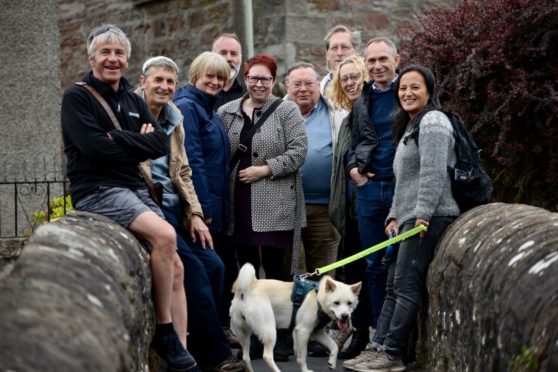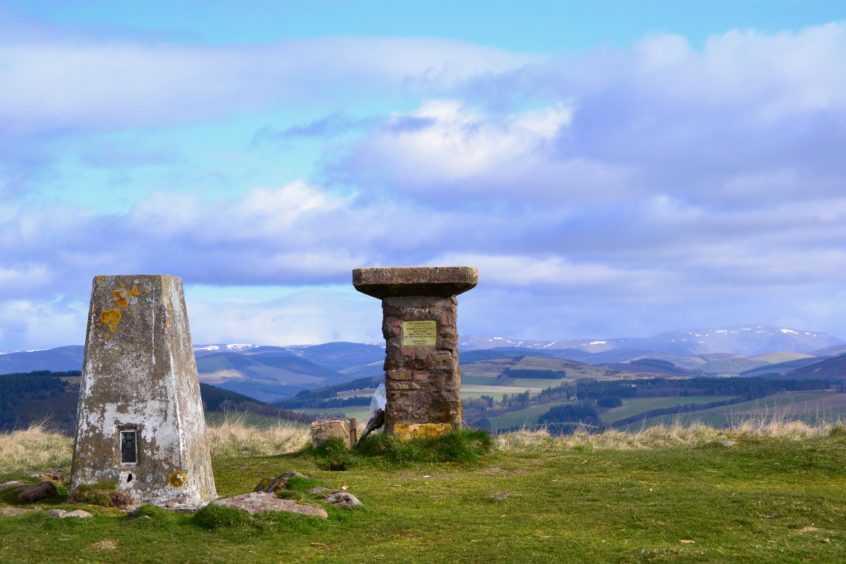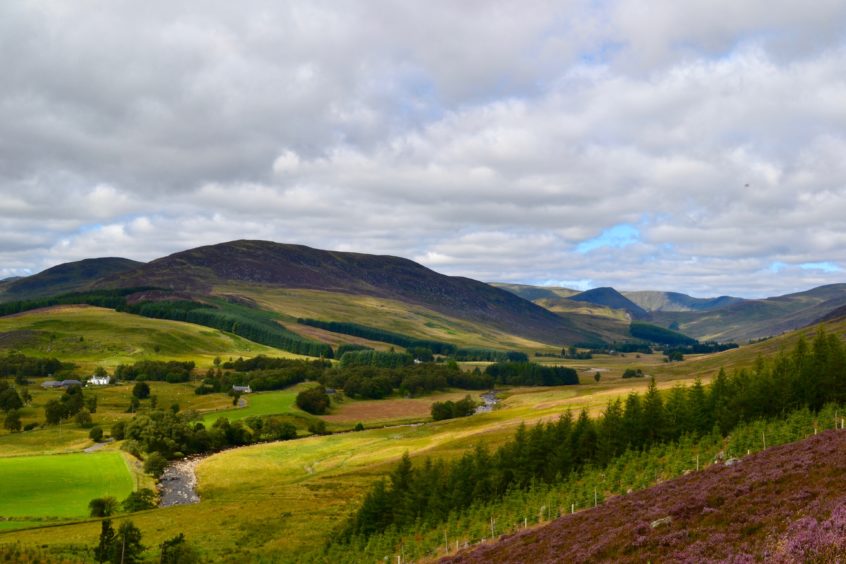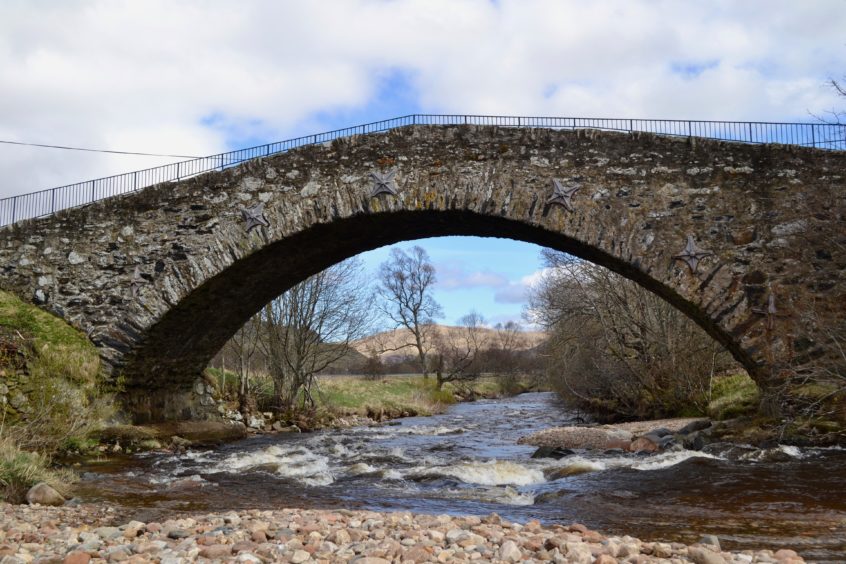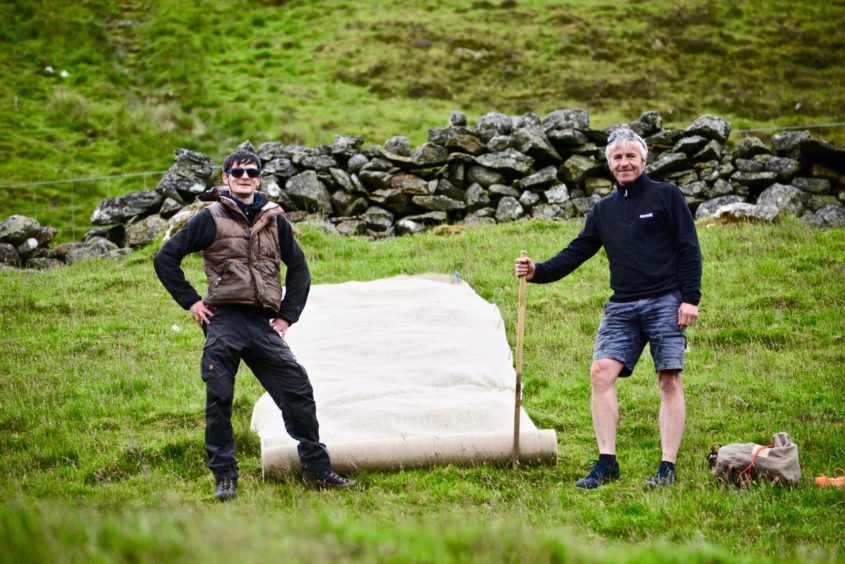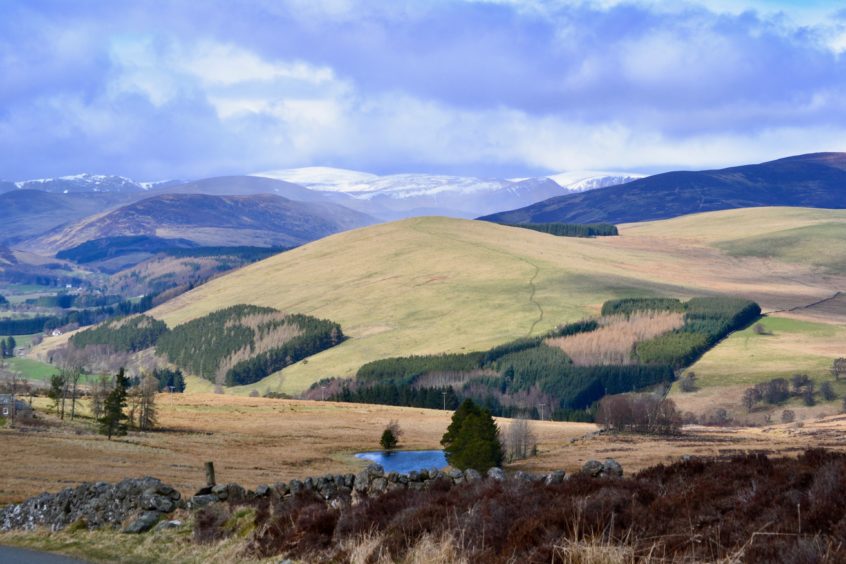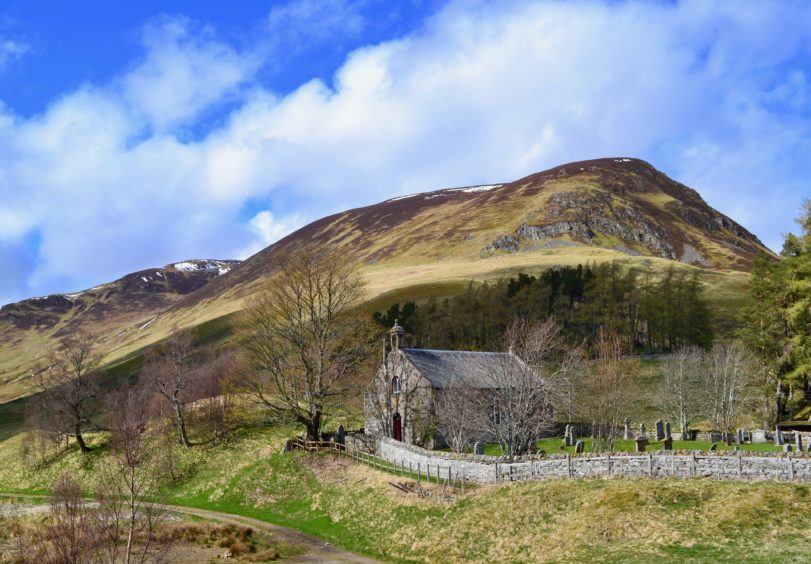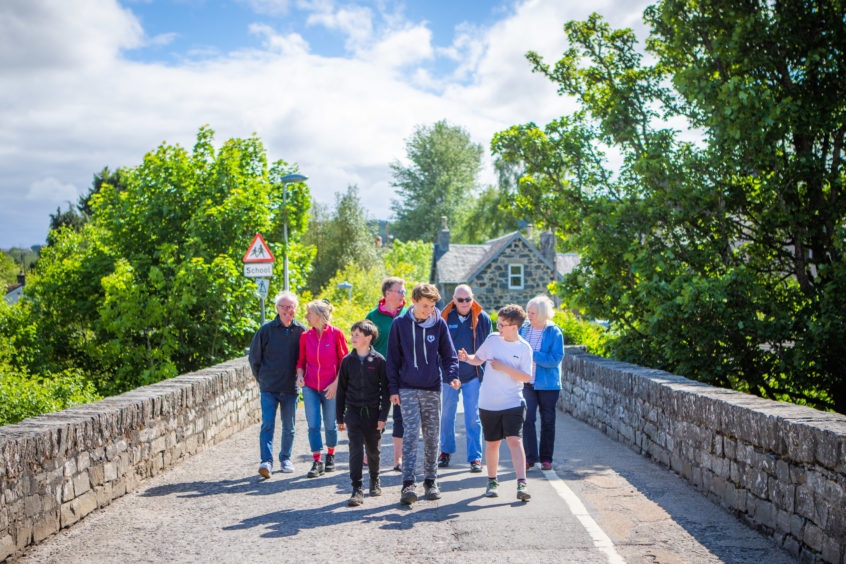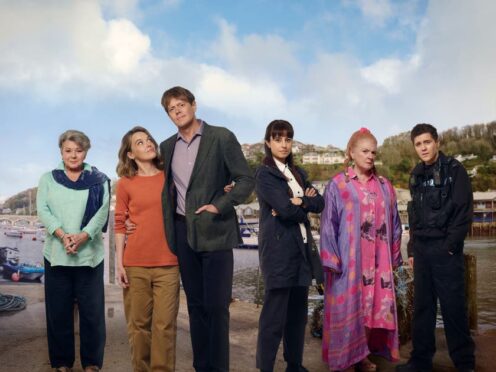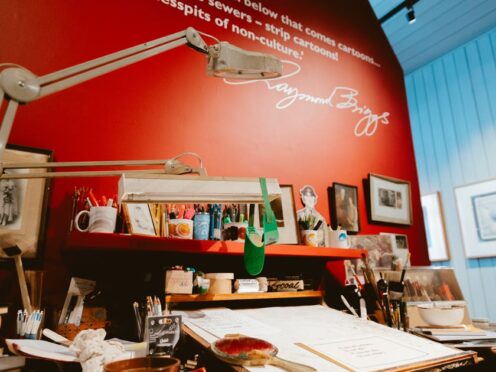The Cateran Ecomuseum is a new museum without walls. Gayle Ritchie goes exploring and discovers a celebration of people, history, culture and landscape…
Forget dusty artefacts locked away behind glass cases – everything in the Cateran Ecomuseum is outside.
Designed to reveal the hidden heritage of a captivating area of Perthshire and Angus known as “Cateran Country”, the newly launched ecomuseum is the brainchild of Clare Cooper, an Alyth-based business owner and independent cultural producer.
In essence, it is a museum without walls – the antithesis of a static, indoor repository created by an elite group.
As well as flagging up sites to explore via a new website (cateranecomuseum.co.uk), local experts have designed itineraries for walking, cycling and driving, plus there’s an exciting outdoors art project, No Boundaries, planned later in the year.
It’s an eco-friendly, alternative bid to promote heritage and push tourism in an area of Scotland which, for many, remains a mystery.
“There’s so much to see, do and experience in Cateran Country and we want to share this with people,” says Clare, who, along with Meg Mearns and Kevin Greig, is a founding director of the ecomuseum.
“We want to tell the story of its people, places and landscape. It’s a way of revealing intriguing aspects of this part of Scotland’s history, geology and ecology. It’s an opportunity to explore the forgotten and unremembered, as well as celebrating the here and now.”
The Cateran Ecomuseum is the second ecomuseum in Scotland (the other one is in Skye) and it’s the only one on the Scottish mainland.
The concept isn’t new – it originated in France in the 1970s and it’s thought there are around 300 ecomuseums worldwide.
The aim is to promote and celebrate the heritage and culture of particular places in an inclusive and environmentally sustainable way.
“The Cateran Ecomusem is a community-driven venture that links together existing and new attractions to help conserve and share the natural and cultural heritage of this stunning, fascinating area,” says Clare.
“We’ve got local historians, geologists, archaeologists, farmers, artists, poets, photographers, film-makers, storytellers, youth groups and heritage groups on board to help tell our story.
“While it’s great to have traditional building-based museums, the ecomuseum concept offers an alternative approach to curating the past – an opportunity for local people to share the unique heritage of where they live in a way that’s meaningful to them and which preserves the objects, sites and culture they value.
“No new physical buildings need to be erected to house the stories and information and rather, people can simply immerse themselves in the landscape and objects that are already in existence.”
People have come forward with photographs and stories unearthed from the past, which chart the history of farming, sporting endeavours, industrial revolution and much more.
The Spin Along the Ericht project, for example, explores the history of the textile mills on the River Ericht in Blairgowrie. This affords a rare and fascinating insight into the thriving textile industry outside Dundee.
ARTEFACTS AND STORIES
The ecomuseum boasts more than 1,6000 sites of historical and archaeological interest including stone circles, Pictish Stones and rare long houses, tower houses, kirks, prehistoric burial cairns, castles, military and drove roads and bridges, as well as ancient hunting forests, lochs, waterfalls, hills and glens.
There are unknown stories surrounding the legends of King Arthur, Irish giant Finn mac Cumhaill and the contemporary Scottish traveller community to be discovered.
There are events linked to the Jacobite rebellions and fables of the Caterans themselves – the Highland cattle raiders who were the scourge of Strathardle, Glenshee and Glenisla from the middle ages to the 18th Century.
There are walks, trails and breathtakingly beautiful drives including the Snow Roads Scenic Route, a 90-mile journey from Blairgowrie through the heart of the Cairngorms National Park.
NO BOUNDARIES
Clare’s hugely excited about the “No Boundaries” project in November, which will see three outdoor installations popping up in Alyth, Blairgowrie and the Spittal of Glenshee celebrating the emergence of the ecomuseum.
The installations are being co-produced with the North East of North (NEoN) Festival and involve Dundee digital artists Biome Collective, willow weaver Jane Wilkinson and muralist Martin McGuinness, both based in Alyth, Perthshire poet Jim Mackintosh and young people from Cateran Country.
“One of these will celebrate the 100th anniversary of the birth of poet Hamish Henderson with a giant portrait of him made out of hessian on the side of Bad an Loin, a hillside at the Spittal of Glenshee,” says Clare.
“It’s surprising how many people have never heard of Hamish but he was born in Blairgowrie and spent his first five years in Glenshee. He’s been called the most important Scots poet since Robert Burns, was co-founder of the School of Scottish Studies, and wrote poetry and songs, one of his most famous lyrics being ‘Freedom Come All Ye.’”
If the name Martin McGuinness rings a bell, you might recall that last year, Martin (the artist and not the Irish republican politician) was commissioned to create one of Dundee’s largest murals on the side of a tenement block in Stobswell. This project was supported by V&A Dundee as part of its opening ceremony.
Meanwhile, Jim will work on a poetry residency, with young folk, focusing on Hamish’s work. The resulting poetry will be projected onto the mountainside alongside the portrait.
Jane, meantime, will run workshops making coracles, one of the earliest recorded boats in Scotland.
“Finding this new way to connect to the 6,000 years of human history and 400 million years of geological history here has given everyone involved in creating the ecomuseum a real sense of place and pride of place and we want to share that with others,” says Clare.
“Taking time to create new experiences that celebrate people like Hamish Henderson, and recreate ancient crafts, strengthens that sense of connection.”
AULD ALYTH
Alyth locals Nigel Dalziel and Professor John MacKenzie provided historical material, photographs and “pen-portraits” of significant local individuals, resulting in the “Auld Alyth Town” itinerary part of the ecomuseum.
This is a walk designed to reveal the most intriguing aspects of the town’s history and background to its notable characters.
“It’s been a delight learning more about the life and work of former generations who have moulded the landscapes and settlements we occupy and enjoy today,” says Nigel.
“The ecomuseum website is almost like a door into this different world, enhancing our appreciation of so many aspects of both town and country in this beautiful part of Scotland through so many subjects – music, history, archaeology, cultural traditions, native languages, geology, ecosystems and more.
“This online resource is readily accessible to so many people and complements the traditional resources of fixed visitor centres and museums, reaching parts of the population that might not otherwise engage with the environment around them.”
A SPIN ALONG THE ERICHT
During the Industrial Revolution, Blairgowrie was a bustling centre of the textile industry, first spinning flax, then jute and latterly rayon.
Chair of the Blairgowrie and Rattray Local History Trust Meg Luckins and Peter Dawson, co-author of The Mills on the Ericht, produced a walk itinerary in Blairgowrie and Rattray titled A Spin Along the Ericht,
The walk, which takes around two hours, tells the story of 11 of the old mills of the area, the innovations made in them and the challenges mill owners and workers faced.
“I have a keen interest in the heritage of the mills scattered along both banks of the River Ericht from Craighall to Rattray,” says Meg. “It’s a fascinating part of Blairgowrie and Rattray’s past and much remains of these buildings though several are now sadly lost.
“A wealth of material exists on this subject and working with Clare provided an excellent opportunity to pull it together for this ‘museum without walls’.”
CATERAN TRAIL
Bob Ellis is chair of the Meigle and Ardler Community Council and one of the founders of the Cateran Trail, a 64-mile route through Perthshire and the Angus Glens.
He deems the Cateran Ecomuseum the latest “positive project” in Cateran Country and says he’s sure it will boost tourism, historic or otherwise.
”Walking through the landscape of the Cateran Ecomuseum is special in so many ways,” says Bob.
“Walkers can lose themselves in their own imaginations of what happened in the distant past.
“They might imagine, for instance, the Cateran warriors herding their rustled cattle back to their own land, or the farmers working in the estate grounds and feeding their own families.
“There are also the many folklore stories, some of which have elements of truth in them.”
ANCIENT HISTORY
Situated on the 500-million-year-old geological Highland Boundary Fault – the great geological feature that divides the Scottish Highlands from the Lowlands, the ecomuseum’s human history stretches back through millennia with sites identified from Neolithic times. It covers around 370 square miles and the community council areas of Alyth, Blairgowrie, Mount Blair, Kirriemuir and Angus West.
Clare is adamant that the ecomuseum is for locals and tourists alike.
“Even those who live here might imagine they know the area inside out some may be surprised to learn that there’s so much more to discover,” she smiles.
“This is just the beginning! We’ll be telling more stories of the people, places and landscapes of Cateran Country as we grow. This is phase one – just the tip of the iceberg. The project has so much more to share.”
Wondering where to get started? Visit the Cateran Ecomuseum website to whet your appetite to get out and explore.
info
The Cateran Ecomuseum and No Boundaries are funded by the Perth & Kinross and Angus European Leader Programme, Perth and Kinross Council, Cairngorms National Park and the Drumderg Fund. Two evocative films have been created by Stefan Morrocco of Morrocco Media and Kieran Baxter which encourage viewers to experience the wonders of Cateran Country. cateranecomuseum.co.uk
